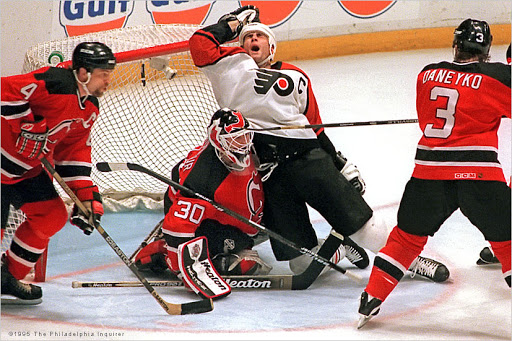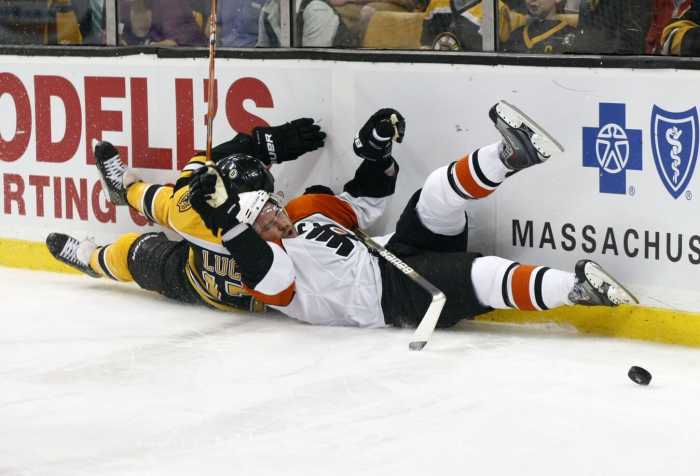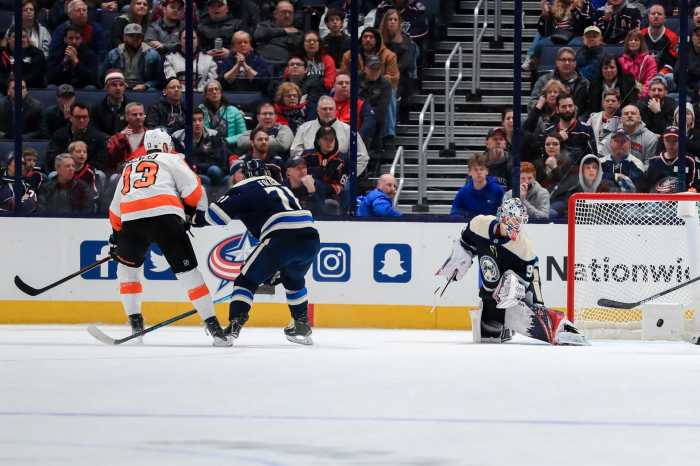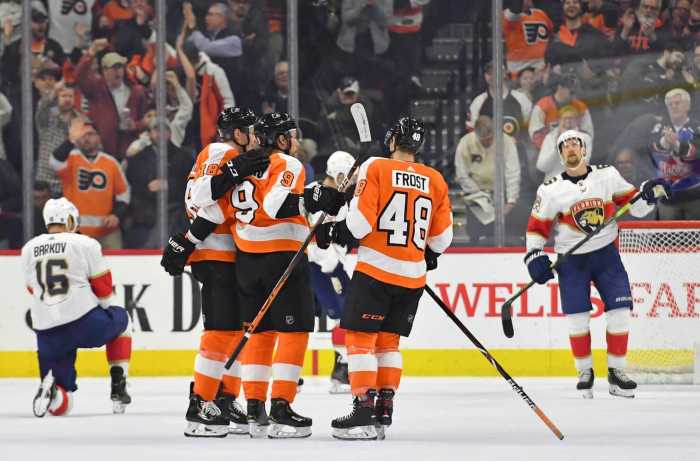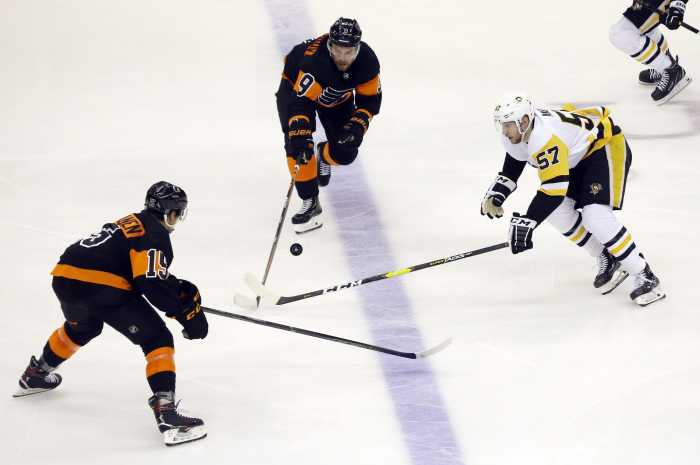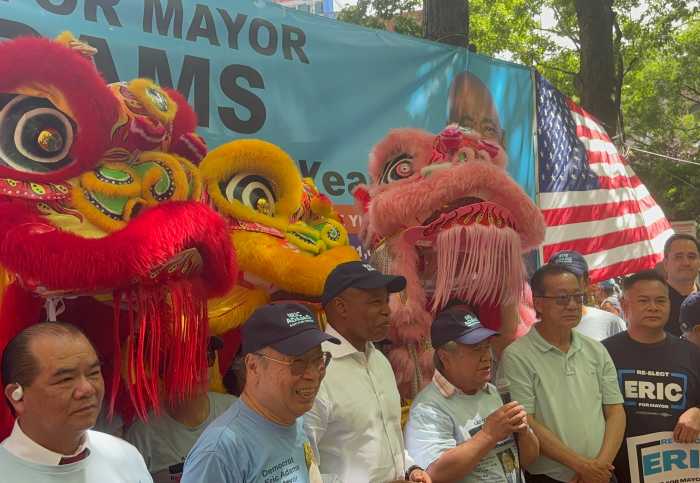This series always brings up a huge “what if” scenario for the Philadelphia Flyers fans. “If Eric Lindros isn’t knocked out by Scott Stevens, do the Flyers win the series?” Lindros’ absence from the final game of the series was big, but Philadelphia played better without him in the lineup earlier in the series. This is a tough pill to swallow. The New Jersey Devils were simply that much better.
Playing at home didn’t provide any advantage to the Philadelphia Flyers. This tight series saw the Flyers playing better on the road. The strongest performance by Philadelphia was in game three of this series. At the former Continental Airlines Arena, the Flyers took a lead in this series. There were clear examples of the heart and grit of the team without Eric Lindros getting the job done. What went under the radar was the performance of Simon Gagne.
2000 – Flyers vs Devils
In the 1999-2000 regular season, both of these franchises played each other five times. The Philadelphia Flyers won once. This playoff series was a test of strength for this Flyers team. Again the underdogs, Philadelphia began to show the hockey world that they couldn’t be counted out. Everything we knew about the regular season was thrown out of the window.
Mark Recchi, a complete treasure, led the Philadelphia Flyers in scoring. A nineteen-year-old Simon Gagne was on the road to greatness at the turn of the millennium. Brian Boucher was only 23 and played brilliantly behind starting goaltender John Vanbiesbrouck. By the time the Flyers were in a position to take control of the Eastern Conference Finals, Boucher was the starting goaltender.
First Period
Speaking of Mark Recchi, he scored the first goal in game three of the 2000 Eastern Conference Finals. On a two-on-one, Recchi finished off a pass from John LeClair. Soon after, Claude Lemieux tied the game off a shot that was inches away from being blocked by Luke Richardson. The New Jersey Devils had an opportunity to lead the game later in the first period, but Brian Boucher made a circus save on Jay Pandolfo. The Philadelphia Flyers would lead at the end of the first period, 2-1, after Keith Jones ran over Martin Brodeur as he forced the puck home.
Second Period
The second period was a defensive display for the Philadelphia Flyers. Brian Boucher kept the New Jersey Devils off the scoreboard this period, making another acrobatic save against Patrik Elias. It may have been one of the best saves in NHL post-season history. Rick Tocchet put a rocket through Martin Brodeur’s five-hole. At the end of the period, the Flyers extended their lead, up 3-1.
Third Period
It is said that a two-goal lead is the worst lead you can have in hockey. Late in the third period, Scott Niedermayer brought the New Jersey Devils within one goal. The grit of the Philadelphia Flyers was put to the test. John LeClair was split open after taking a stick to the face on a clear by Martin Brodeur. Simon Gagne made sure the egg was on Brodeur’s face, forcing Brodeur to do the splits while the puck was resting behind him.
What Happened Next?
Now up a game in the series, the Philadelphia Flyers would play game four at the Continental Airlines Arena. By the time the series came back to Philadelphia, the Flyers had a chance to punch their ticket to the Stanley Cup Finals. The Devils got their win back at the then First Union Center. In game six, Eric Lindros came back, but New Jersey proved they had what it took to remove Lindros’ effectiveness.
Anytime the Philadelphia Flyers faced the New Jersey Devils with Eric Lindros in the starting lineup in 1999-2000, the Devils won. The Flyers were more effective as a unit without Lindros in the lineup when it came to playing New Jersey. I believe that Lindros was rushed back too early when analytics said that he wasn’t necessary. Game six showed a dependency on Lindros. After Scott Stevens hit Lindros in game seven, he was never the same again.
Mandatory Credit – Jerry Lodriguss / The Philadelphia Inquirer

